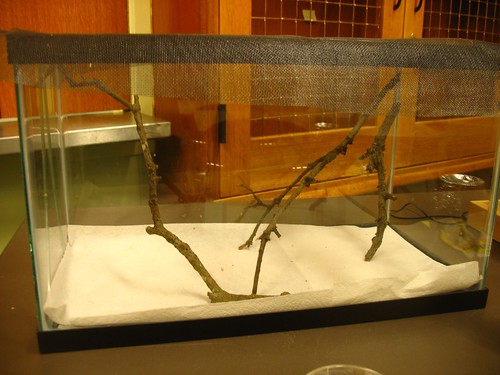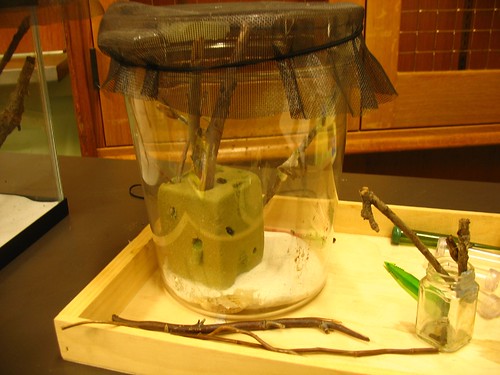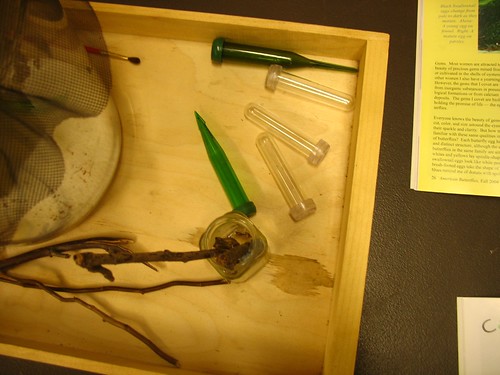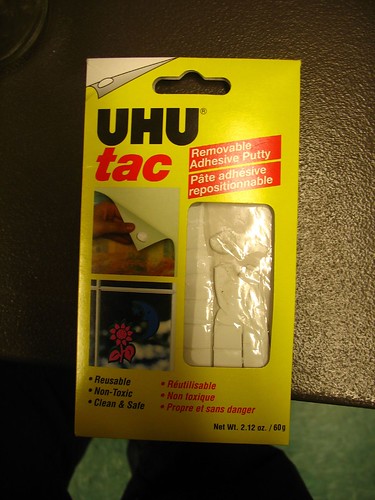Lots of butterflies are indicators of a healthy environment. Gardening organically, without pesticides, is the best way to attract and nurture these beautiful winged creatures into your own garden. Join local butterfly expert Charlotte Torgovitsky to learn basic butterfly biology and unique identifying features of the species you are most likely to see in your garden. Through their amazing life cycle, these insects have developed important associations with certain plants that are essential for their survival. Discover the techniques for establishing a successful butterfly habitat in your garden using plants that are both beautiful and beneficial. Includes a butterfly 'safari' in the Garden.Really, the class was about habitat gardening. Ms. Torgovitsky, a lifetime Master Gardener, works at the Marin Art and Garden Center where she is in charge of garden education. MAaGC is an 11-acre park off Sir Francis Drake Blvd in the town of Ross in Marin County. It's the only community garden in Marin County. She started to get excited about butterflies ten years ago, and today it's a consuming passion. Butterflies, she said, are really the poster-children for habitat gardening, because "butterflies are the insects that everyone likes".
She pointed out that habitat gardens are for humans too, and advocated gardening with a mix of 1/3 ornamentals, 1/3 vegetables, and 1/3 natives. (Note: That's exactly what Don Mahoney, curator of the SFBG, said he set out to do with his home garden at the design symposium I went to last month.)
I can't recap the whole discussion because there was so much information and I don't want to infringe her copyright by copying from the handout, but here are a few points...
She explained that butterfly gardens (aka habitat gardens) need four things:
1) No pesticidesAnd by shallow water, she means puddles in the ground, or depressions in stone, perhaps a birdbath filled with rocks and mud. Anything that will hold a small amount of water with a place for insects to land can promote insect life. She built dry-stacked stone walls throughout her garden using stones with irregular surfaces that hold tiny puddles of water. She noted that stone walls also hold and radiate heat, giving cold-blooded invertebrates a place to warm themselves.
2) Full sun
3) A windbreak
4) Shallow water
She went through the butterfly lifecycle and I learned some new words...
1. Caterpillars molt 4-5 times before pupating. Between each molt, the caterpillar is called an instar.She strongly advocated collecting late-stage larvae to keep the vulnerable pupa safe. Do this only if you know what the larval host plant is, and if you have enough of it to keep a fresh supply available to the containerized caterpillar.
2. An adult butterfly ecloses from the cocoon.
3. A butterfly is a butterfly at all stages of its life, but the adult is technically called an imago.
She uses a small, soft paintbrush to handle caterpillars because their skin is permeable and may absorb oils, soaps, or chemicals from your fingers. She recommends 10-g aquariums of large jars with screencloth cover.

Use an elastic band to secure the screen to the tank. Line with paper towels so you can replace them. (Caterpillars excrete frass, and you don't want it to build up.) Twigs provide pupation sites.

Keep the container dry to minimize fungi and molds, but keep plant material in water to retain turgidity. Cover the water with tinfoil to prevent drowning--put holes in the tinfoil for the plant stems.

Or use florist pins or flower tubes to hold cuttings.

Or, better, use plants growing in 4" pots. She maintains a large collection of plants in 4" pots just for this purpose.
She recommended this tac putty for all kinds of things, including reattaching a pupa that's established itself in an inconvenient place.

Plants. Most of the class was actually about plants!
She's a huge admirer of California's native cobweb thistle, Cirsium occidentale, and she has an article about it in the upcoming issue of Pacific Horticulture which should be interesting. I must say the pictures of thistles in garden were stunning and it seemed to combine well with everything (although I didn't jot down what she had it paired with).
About milkweeds, she said Mexican species Asclepias curassavica was the best. It also grows well in containers unlike the CA native Aclepias speciosa. A quick check shows it's available from the JL Hudson catalog:
ASCLEPIAS (as-KLEP-ee-as)
ASCLEPIADACEAE. 'MILKWEED', 'SILKWEED'. Some of the most striking of our N. American wildflowers, they are showy summer and fall blooming hardy perennials. Easily grown and making nice specimens in the border or wild garden. Attractive foliage and pods. Often grown to attract butterflies. Some are medicinal, used as spring greens or produce fine fiber. Some species germinate readily in as little as 8 days, up to 60-90 days, others need cold.
--Asclepias currassavica. (b,h) ASCL-3. Packet: $2.00
Germination: 91% Tested: 7/07, 1/2 Oz: $6.00, Oz: $9.00
'BLOOD FLOWER'. Deep reddish purple flowers with orange hoods, in flat clusters. Tender perennial to 2 - 3 feet. Tropical America. A host to the Monarch butterfly. Used medicinally and the stem fiber has been spun, & the seed floss used in pillows. Germinates in 2 - 4 weeks warm.
She recommends Verbena bonariensis over Buddleja for the small garden because the latter is just a nectary whereas the former serves as both a nectary and larval host.
She's a big fan of California native perennial bunch grasses in the habitat garden. Like me, she's grown all her grasses from seed and we have many of the same species. Nassella pulchra and Muhlenbergia rigens are favorites. She also talked about California Sweet Grass Hierochloe occidentalis (link, link, link) which grows well in dry shade and smells like vanilla!
She likes all Eriogonum and the new one for me was Eriogonum nudum (link, link, link).
She lamented the widespread invasion of California by European fennel, but said it was an outstanding habitat plant for butterflies and other insects. If you want it in your garden, she said to plant bronze fennel.
Another weed used as a larval host: pellitory! I guess I can stop yanking that Parietaria judaica everywhere I find it! Who knew! Also, mallows, cudweed, and baby's tears. (Note: pellitory and baby's tears are both nettles--butterfly larvae like nettles.)
For blooms in winter: Gaillardia, at least in her Northern California garden.
The last part of the class was all about specific butterflies likely to be seen in the Bay Area. She had pictures of the instar, imago, and distinguishing underwings for twenty-six local butterflies.
Some stray points:
The Mourning Cloak (Nymphalis antiopa) imagos for a year! (Many/most adults live for only 1-3 weeks).
Butterflies toxic to predators fly straight ("fearless flight"), whereas non-toxics tend to flutter.
Larvae that feed on Sticky Monkey-Flower (Mimulus aurantiacus) will not do so in dry years because the plant is too sticky (dry years = extra-stickiness) and jams the caterpillar's chewing mouth parts. Similarly, young instars will avoid chewing milkweed veins to avoid encountering excessive latex.
Cabbage Whites sequester uric acid in their wings (to resist predation) and that's what makes them white!
Besides flower nectar, some butterflies feed on dung and rotten fruit. Some obtain necessary minerals by sipping puddle water.
The last page of her handout is a bibliography. Three books she mentioned verbally: Common Butterflies of California by Bob Stewart, Garden Insects of North America by Whitney Cranshaw, Four Wings and Prayer by Sue Halpern.
I'm going to end here with some words to contemplate from Ms. Torgivitsky's mentor, Bob Stewart: "If you see the small things, you see everything."

10 comments:
There you go again, raising my awareness of yet more plants.
Thanks so much for the notes.
My sunny utility valley of future botanical delights should be prime butterfly habitat. I'll have plenty irregular stone, native plants (weeds), store bought ornamentals and I won't be spraying pesticides.
So much new in your post that was not known before, all those names especially. Our local newspaper once published a full page color poster of the most common butterflies in our area, I have it tacked in the craft/guest room. It's good to know which butterflies and moths live around you and the plants they need to survive. An excellent reason to even have a garden in the first place.
Frances
What a cool class, Chuck. I'm happy to report Verbena bonariensis is coming up all over the place and the orange red asclepias lived over - yay!
But imago??
My name is Imago Monarcha and I've come to eat your milkweed
Annie at the Transplantable Rose
Please tell me there are other Mandy Patinkin fans out there.
Cirsium occidentalis has been on my secret wish list for some time, but I didn't know anyone grew it. I saw it in the wild during a summer botany course and it is striking. The plant was almost as tall as me (6 ft.), all silver, and had deep blood-red flowers.
Seeds are available from Theodore Payne for sure, and maybe from J.L. Hudson too, and I'll bet it's easy to grow.
If I had a lot more space than I do now, I might try them in a remote location.
I'm very, very picky about putting anything thorny in my garden. A couple roses, and some berberis, and I already feel like that's too much.
For Annie - I think the name was Inigo Montoya. I loved that movie (don't forget about Christopher Guest!) & I read the book to my son.
Hi, Chuck - very informative. I need to come up with some kind of puddle set up for my butterflies. A muddy area won't work because my soil dries out too fast, so I'll have to look into some sort of rock thing.
Chuck, I don't do much in the thorny department either except for a few roses - not even one barberry, which will get me a black mark from Hank. And I've spent too much time helping my Divas of the Dirt friends prune pyracanthas and Mermaid roses to ever consider planting either of those.
Whew- glad someone got that very bad pun, MMGD ;-] My husband and children and I have also gone around saying "incon-theev-a-bull!" for twenty years.
Annie
GREAT post, Chuck!! So much information and cool factoids...makes me want to get some butterfly books. I'm glad they like thistle and nettles, cuz' I'm already planting them for my creepy neighbors...win-win!
Thanks for the source, Chuck. Might be worth a try. I've already got the potted Puya, masses of blackberry and salmonberry...what's one more thorn in the side, right?
Annie, say his name...as you wish.
Post a Comment